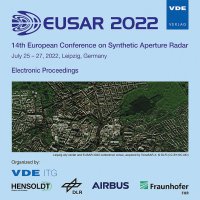CHORUS – Changing How and When We Observe Our Planet
Konferenz: EUSAR 2022 - 14th European Conference on Synthetic Aperture Radar
25.07.2022 - 27.07.2022 in Leipzig, Germany
Tagungsband: EUSAR 2022
Seiten: 4Sprache: EnglischTyp: PDF
Autoren:
Sharma, Jayanti; Caves, Ron (MDA, Canada)
Inhalt:
MDA is developing CHORUS, a next-generation multi-sensor SAR constellation that will include C- and X-band SAR capabilities. CHORUS is a commercial Earth observation satellite mission that will extend MDA’s advanced geospatial data, products and analytics services business well into the future. CHORUS-C will provide continuity for the current users of RADARSAT-2, which has been providing C-band SAR data for over fourteen years. CHORUS-C will work in concert with a trailing X-band SAR satellite, CHORUS-X, for higher resolution data collection and cross-cueing. To support cross-cue operations, CHORUS offers Near Real Time (NRT) downlink and processing from CHORUS-C, and fast tasking to CHORUS-X. Leveraging the technology developed on RADARSAT-2 and more recently on the RADAR-SAT Constellation Mission (RCM), CHORUS will provide the broadest coverage of any SAR satellite system. With a 700 km accessible swath width and the ability to look in left- and right-looking modes, CHORUS will be capable of covering large areas quickly and cost efficiently. The CHORUS system is also ideal for very large area monitoring applications such as oil spill detection, and includes three dedicated vessel detection modes, multiple Stripmap Modes (8m, 5m and 3m), and metre to sub-metre very high resolution Spotlight modes. With both C-band and X-band sensors operating in a mid-inclination orbit, CHORUS will provide coverage over a range of times throughout the day, something that is not available with current SAR spacecraft in sun-synchronous orbits, as well as improved coverage between ± 62.5deg latitude. This paper provides a high-level description of the design of the CHORUS mission including orbit, imaging geometry, modes, and operations.


